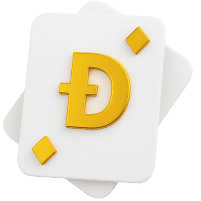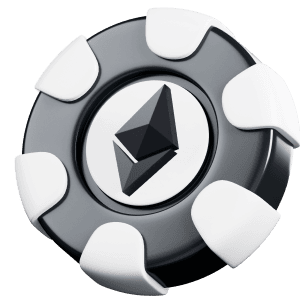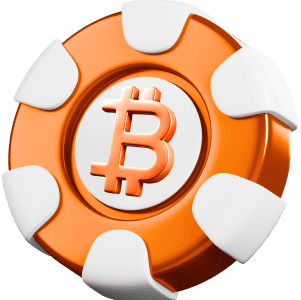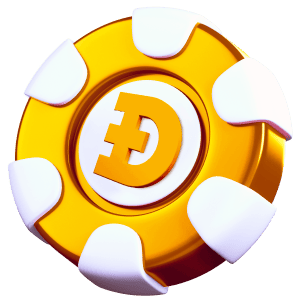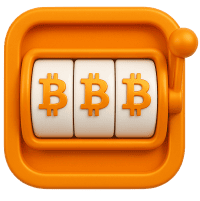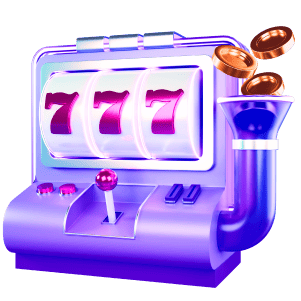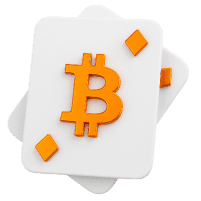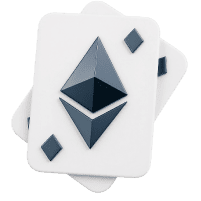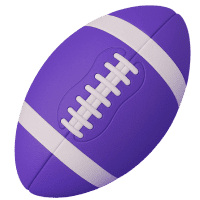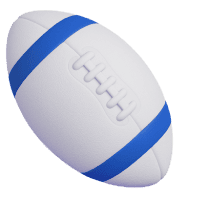The Web3 space is evolving and new areas of activity are emerging. One of them is the tokenisation of physical world tangible assets. RWA (Real World Assets) is the concept of tokenisation of real assets on blockchain, which allows for the integration of traditional financial and physical assets
RWAs in DeFi and cryptocurrencies demonstrate how tokenisation integrates blockchain and traditional finance. They are expanding the familiar understanding of the use of traditional investment assets, increasing liquidity and bringing assets to new markets. We take a look at the best RWA crypto projects, their features, and pros and cons of this industry.
The best RWAs in 2025
RWA Coins are real physical or financial assets converted into digital form. These include things like real estate, raw materials (like oil or gold), equipment, vehicles, company shares, bonds and other tangible or tangible objects. These assets have real value and can be used as collateral or a source of income.
Many well-known large companies such as BlackRock are interested in the RWA Tokens technology. Experts and analysts believe that in the next 6 years the market will exceed 5 trillion dollars. Tokenise most of the assets, the greatest demand for real estate, bonds and stocks, direct loans.
Top real world assets crypto:
- Ondo Finance (ONDO);
- Chainlink (LINK);
- MANTRA;
- MakerDAO (MKR);
- Avalanche (AVAX);
- Hedera (HBAR);
- OriginTrail (TRAC);
- Landshare (LAND)
- Synthetix (SNX);
- Pendle Finance (PENDLE).
Best rwa coins are available for purchase on exchanges: Bybit, HTX, Mexc, OKX, Binance.
Ondo Finance (ONDO)
Ondo sets itself apart from other projects by integrating real-world assets (RWAs) into the blockchain ecosystem. This integration gives investors access to a variety of cash management products and bond funds. Ondo’s approach combines the efficiency of DeFi with the reliability of traditional finance (TradFi) and creates a new paradigm in asset management.
As of February 2025, the token has a total capitalisation of $3.9 billion. It is traded on Coinbase, Bybit, KuCoin, Gate.io, Bitget and other platforms.
To attract investment, Ondo Finance organised a pre-sale of its token ONDO on the Coinlist platform in July 2022. During this round, two types of offers were realised:
- First offer: 3 million coins were sold at $0.03 with a lock-in period of one year. After the lock-in period ends, token issuance will occur evenly over the next 18 months.
- The second proposal: 17 million coins were sold at a price of $0.055 with a similar lock-in period of one year. Here, however, token issuance would begin immediately after the blockchain was lifted and would last only 6 months.
These conditions ensured that tokens would gradually enter the market, which contributed to price stability and incentivised long-term investment.
Chainlink (LINK)
Chainlink is a blockchain platform aimed at connecting various networks, applications and data to blockchain ecosystems. The system is designed to enable smart contracts to interact with real data, allowing authentication and verification of information for use within the blockchain.
With Chainlink, smart contracts gain access to authentic real-world data such as stock quotes, weather information and market analytics. This process is carried out through specialised nodes called oracles, which guarantee the authenticity and accuracy of the information transmitted. The LINK native token is required to pay for the oracles and is used to improve the accuracy of data processing as well as support the stability of contracts on the network.
The token, at the time of the review, has a total capitalisation of $11.5 billion. On the Binance exchange, the coin is the 11th most popular. You can buy it on Binance, Coinbase, Bybit, KuCoin, Gate.io.
MANTRA
MANTRA is a DeFi platform with its own blockchain that was specifically designed to support tokenisation of real assets. The platform is based on the Cosmos ecosystem and leverages the Inter-Blockchain Communication (IBC) protocol, which makes it much easier to interact with other blockchain networks.
The elements of the ecosystem are:
- MANTRA Chain. The portal’s main blockchain, which ensures that it maintains interoperability with external networks, making the platform universal for RWAs.
- MANTRA Finance. A suite of DeFi products with asset swaps, lending and other financial instruments. You don’t need to transfer funds to the platform to access the services, they are stored on your cryptocurrency wallet.
- MANTRA Nodes. A network of nodes that secure the blockchain.
- OM Token. A native token of the platform that performs the functions of management, service access, staking and economic incentives for holders. The asset has a market capitalisation of $7 billion in 2025.
The project has a separate trading platform AUMEGA. It combines decentralised and centralised finance mechanisms in a network. AUMEGA has two main tools: Automated Market Maker (AMM) and Central Limit Order Book (CLOB). In the first one, users can provide liquidity, for which they receive a guaranteed reward. The second option allows users to place buy and sell orders with fixed prices.
MakerDAO (MKR)
MakerDAO has rebranded and improved its services and is now called Sky. The project itself has been operating since 2017, and became known for launching DAI, a popular stablecoin that is pegged to the US dollar exchange rate. In recent years, the project has enabled tokenisation of real assets, including mortgaged loans against real estate.
MakerDAO is a platform that allows property owners to quickly obtain liquidity in the form of DAI stablecoins. The amount of financing provided is determined by the value of the pledged property. Loans are provided with interest, similar to traditional financial systems. However, the key difference is that the interest earned is used to further the growth and development of the MakerDAO ecosystem, contributing to its sustainability.
The project offers the transfer of four categories of real world assets into RWAs:
- Cashlike – centralised stable USDC coins and short-term government bonds;
- Clean Money – assets that support sustainable projects in renewable energy, nuclear power and agriculture;
- Miscellaneous – other assets that include ERC-20 standard tokens, Wrapped Bitcoin (WBTC), security tokens and Tier 1 bridge tokens;
- Physically Resilient RWA – real assets that are difficult to confiscate. Physical real estate or sustainable hardware.
The total capitalisation of the DAI token is as follows
Avalanche (AVAX)
Avalanche is a Tier 1 blockchain powered by Proof-of-Stake. The project actively competes with Ethereum, focusing on smart contracts and decentralised applications. The key feature of Avalanche is the extremely high speed of transaction processing: operations take only one second, which is much faster than Ethereum, where it takes about a minute. All this makes the AVAX token one of the fastest cryptocurrencies on the market. Also, don’t forget about the Avalanche Bridge technology, which allows token transfers between the Avalanche and Ethereum networks.
The Avalanche blockchain has low fees and high bandwidth. Avalanche has attracted attention in recent years due to its ability to integrate real-world RWA assets. The Avalanche blockchain supports interoperability, which opens the door to interoperability with other blockchains and platforms. This interoperability is important for the successful integration of real assets into the global financial ecosystem.
The coin has a market capitalisation of 10.42 billion.
Hedera (HBAR)
Hedera is a fast, open-source, proof-of-stake (PoS) blockchain and management platform that enables the creation and deployment of decentralised applications (dApps) in the popular Solidity programming language. Hedera is characterised by the use of a smart contract protocol and the unique Hashgraph consensus algorithm, which sets this network apart from other solutions. In addition, Hedera features two additional layers: a Consensus layer based on the Hashgraph model and a service designed to create and deploy new cryptocurrencies and non-fungible tokens (NFTs).
Unlike traditional blockchains, Hashgraph offers a more efficient, faster and cheaper solution for decentralised applications, providing higher throughput and lower latency.
On the Binance exchange, the token is the 16th most popular token. The total market capitalisation is approaching the 10 billion mark.
OriginTrail (TRAC)
OriginTrail, built on the Ethereum blockchain, builds a robust knowledge infrastructure for AI. It focuses on combating misinformation by guaranteeing the provenance and discoverability of critical information. It also aims to create a proven network for decentralised AI and empower its users.
The project uses OriginTrail Parachain to realise its plans. OriginTrail Parachain is a specialised blockchain network created by the OriginTrail project that runs on top of the underlying Polkadot blockchain. OriginTrail Parachain is designed to optimise supply chain traceability processes and provide reliable data on the origin of goods and services.
The project is only in its infancy and does not have a large capitalisation. At the time of the review’s release, it stands at $250 million.
Landshare (LAND)
The project works in the sphere of real estate tokenisation and has taken the Binance Smart Chain blockchain as a basis. Notably, this platform includes two key tokens: the Landshare Token (LAND) and the Landshare RWA Token (LSRWA).
The main goal of the project is to make property investments more accessible. For this purpose, macro and micro-ownership options have been implemented. A safe and efficient investment experience is available to all clients of the platform.
Landshare (LAND) has a current market capitalisation of $4.17 million, with a historical high price of 12.46. The data is current as of 21 February 2025.
Synthetix (SNX)
Synthetix (SNX) is a decentralised protocol based on the Ethereum blockchain that allows the creation of synthetic assets (synths). Synthetic assets are tokens that mimic the price of various traditional financial instruments such as stocks, commodities, currencies and indices. This allows users to trade these assets without having to own them physically.
The Synthetix protocol is supported by SNX token holders who participate in the staking and provide collateral for the issuance of synths. Participants are rewarded for providing liquidity in the form of trading commissions and inflation of SNX tokens.
The main components of Synthetix are:
- Synths – synthetic assets that track the prices of various financial instruments.
- SNX token – a native token of the platform used for steaking and providing liquidity.
- Mintr – an application through which users can place their SNX tokens in steaking.
- Exchange – a decentralised exchange where users can trade synths.
Synthetix provides unique opportunities to trade traditional assets in a decentralised environment, making it a popular choice among users interested in DeFi and synthetic assets. It has a market capitalisation of 339 million and continues to grow.
Pendle Finance (PENDLE)
Pendle Finance is a decentralised protocol focused on yield tokenisation. It offers users the ability to split income-generating assets into principal tokens (PT) and yield tokens (YT). This design allows users to trade future yield as a separate asset, giving them the option to lock in a fixed yield or speculate on variable yields. Pendle runs on Ethereum, Arbitrum, BNB Chain, and Optimism, offering an AMM designed for yielding assets with minimal permanent losses.
The $PENDLE token powers Pendle Finance, providing utility, governance and incentive alignment for participants. Holders can block $PENDLE to receive vePENDLE, which provides management rights, a share of protocol revenues, and control over liquidity incentives. The token has a market capitalisation of $593 million.
RWA’s potential for investment
RWA crypto projects in 2024 have been on everyone’s radar as many platforms have shown rapid growth. In 2025-2026, there is every reason for top RWA crypto projects to continue to increase in value. This is due to the increased liquidity of traditional assets, which attracts more buyers.
Tokenisation in the cryptocurrency industry itself is the division of an asset’s value into digital tokens that represent shares of its ownership. For example, with an asset value of $3 million, previously this purchase was only available to large investors. With tokenisation, this amount can be divided into 3 million tokens, each corresponding to a specific share of the asset. An investor who spends $30,000 will receive 1% of the total share, within which they will profit.
Why is it important to split the total value of the asset into individual RWA crypto tokens:
- Increased liquidity, as assets that were previously difficult to sell become more accessible to trade in the cryptocurrency market;
- Lowering barriers to investment, as even a small amount of money can buy a piece of a large asset;
- Increased investment opportunities, as crypto investors can enter previously inaccessible markets, such as artwork, raw materials or luxury property.
There is optimism on tokenised assets. Large companies are already implementing or planning to create their own projects or actively use existing ones:
- Boston Consulting Group expects tokenised assets to become the basis for new cryptocurrency exchange rates;
- BlackRock launched the largest tokenised liquidity fund based on Ethereum;
- HSBC introduced tokenised gold for retail investors.
The Bank for International Settlements (BIS) has joined forces with a number of central banks to develop an innovative project aimed at tokenising international payments. The aim of this initiative is to significantly reduce the processing time of cross-border transactions and lower the associated costs.
The interest from major players confirms the high investment prospects for RWA tokens.
Conclusion
Experts believe that 2025-2026 will be a turning point in the development of the sector. The RWA market is already undergoing mass tokenisation, strengthening the regulatory framework to make transactions more secure, integration with DeFi, growth of secondary markets and the emergence of technological innovations in asset management.
Real-world asset (RWA) tokenisation opens new horizons for investors and enables the integration of traditional assets into the blockchain economy. This creates new opportunities to diversify portfolios, increase liquidity and simplify transactions. To invest in RWAs, you need to understand the risks and characteristics of these assets. But the projects we’ve covered show: the sector is ready for global growth.
Answers to common questions
What are real-world assets (RWAs) in cryptocurrency?
RWAs are tokenised representations of physical assets that allow the blockchain to link traditional finance with decentralised finance (DeFi).
What are the top RWA crypto projects in 2025?
Projects such as OriginTrail (TRAC), Hedera (HBAR), Landshare (LAND) and Ondo Finance (ONDO) are leading the way in RWA tokenisation and have high growth potential.
How does tokenisation benefit real world assets?
Tokenisation increases liquidity, simplifies ownership and increases access to global markets by converting physical assets into blockchain tokens.
Is it profitable to invest in RWA tokens?
Investing in RWA (Real World Assets) tokens can be an attractive option as they link the world of decentralised finance (DeFi) to physical assets, offering growth potential. However, it is important to consider several factors before making a decision: market trends, risks, liquidity, technological and legal aspects, history of the project and the team.




